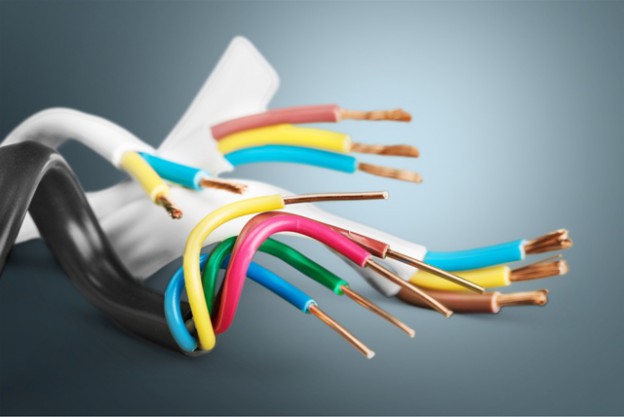PVC (Polyvinyl Chloride) is a widely used material in wire and cable insulation due to its versatile properties. As an insulation material, PVC offers excellent electrical insulation, thermal stability, and resistance to moisture, chemicals, and abrasion. Its flexibility and cost-effectiveness make it a top choice for various applications.
Commonly found in electrical wiring, PVC-insulated cables are extensively used in construction, household appliances, automotive industries, and more. They’re employed in power distribution, wiring systems for buildings, electronics, telecommunications, and automotive wiring harnesses.
PVC’s insulation properties safeguard against electrical shocks, making it a go-to material for safety in wiring. Its durability and resistance to environmental factors enhance its longevity, ensuring reliable performance over extended periods.
PVC serves as a dependable insulation material, finding extensive application across diverse sectors due to its electrical safety, durability, and cost efficiency. Its versatility continues to make it a preferred choice in the manufacturing of wires and cables for various industrial and domestic purposes.
Safety Precautions and Best Practices
Handling and storing PVC wires and cables require adherence to safety measures to prevent accidents and maintain material integrity. Proper handling involves avoiding sharp bends or kinks during transportation or storage to prevent damage to the insulation, which could compromise its effectiveness.
Personal Protective Equipment (PPE) is essential when working with PVC wires. Safety glasses shield eyes from potential debris or particles during cutting or stripping. Gloves protect against abrasions and contact with chemical residues. Additionally, using a well-ventilated area or wearing a respirator is advisable when working in confined spaces or areas with inadequate ventilation to prevent inhalation of fumes emitted during cable processing.
Guidelines for cutting, stripping, and connecting PVC cables emphasize using appropriate tools designed for this purpose. Sharp, non-serrated blades ensure clean cuts without damaging the insulation. Employing proper stripping tools prevents accidental cuts into the wire’s conductive core. When connecting cables, ensuring proper insulation of connections with suitable insulating materials and securely fastening them reduces the risk of short circuits or electrical hazards.
Following these precautions and best practices maintains the safety of personnel working with PVC wires and promotes the longevity and effectiveness of the cables themselves.
Preventing Hazards and Risks
Identification of risks during installation or repair involves vigilant examination for potential issues such as exposed wires, damaged insulation, or improper connections. Exposed conductors pose a significant risk of electrical shock or short circuits, while damaged insulation can compromise the cable’s integrity, leading to safety hazards.
Mitigating the risks of overheating and overloading involves adhering to recommended load capacities, ensuring proper ventilation around cables, and avoiding bundling or coiling that could trap heat. Using cables of adequate thickness for the intended load reduces the risk of overheating due to excessive current flow.
Dealing with PVC wire damage or wear requires immediate action. Small nicks or cuts should be addressed by applying electrical tape to prevent further exposure. However, significant damage demands the replacement of the affected section or entire cable to ensure continued safety and functionality.
Regular inspections for wear, tear, or signs of deterioration in PVC wires are essential for early detection and preventive maintenance. Addressing these issues promptly mitigates risks and ensures the safe operation of electrical systems, minimizing hazards associated with damaged or worn-out PVC wires.
Conclusion
PVC wires and cables serve as integral components in various industries and households, owing to their versatile properties and wide-ranging applications. The robust insulation capabilities of PVC make it a preferred choice for electrical wiring, offering protection against electrical shocks and environmental factors.
However, while PVC is durable, ensuring safety necessitates meticulous handling, storage, and installation practices. Identifying potential risks during installation or repair, mitigating overheating and overloading risks, and promptly addressing damage or wear are crucial steps in maintaining safety standards.
Adherence to safety protocols, including the use of appropriate PPE, proper tools, and regular inspections, is paramount. Vigilance in recognizing and addressing wear and tear prevents hazards and sustains the efficiency and safety of PVC wires.
Ultimately, the efficacy of PVC wires lies not only in their functional reliability but also in the responsible practices applied throughout their lifecycle. By prioritizing safety measures and preventive maintenance, PVC wires continue to be a cornerstone in powering modern infrastructure and technologies while ensuring a secure and reliable electrical framework.
